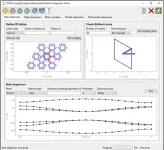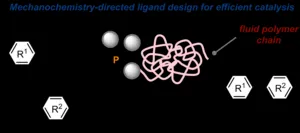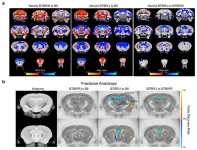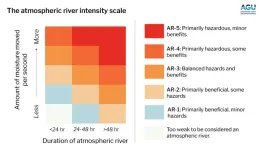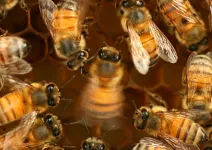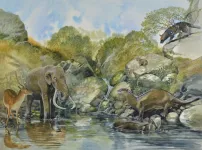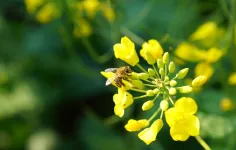Development of a photonic dispersion solver
2023-03-10
(Press-News.org)
An exponential increase in the amount of information required in society is making the development of new optoelectronic devices increasingly important. Recently, photonic crystals have emerged as an alternative to overcome the limitations of conventional photonic devices thanks to their ability to control photons freely in microscopic space to introduce the next generation of highly integrated devices. A research team at POSTECH has developed a photonic dispersion solver that may act as the foundation of studies on photonic crystals.
Professor Junsuk Rho (Department of Mechanical Engineering and Department of Chemical Engineering) at POSTECH along with a team from Gwangju Institute of Science and Technology (GSIT) led by Assistant Professor Minkyung Kim have developed and released a coupled dipole method-based photonic dispersion solver (CDPDS) online for free. The research results were featured in Computer Physics Communications, one of the most prestigious academic journals in the fields of computational physics and computer engineering.
Research on topological photonics requires a variety of simulations, including band analysis of a photonic crystal, calculation of boundary band dispersion between two different photonic crystals, and analytic computation of topological phases using dielectric structures of photonic crystals. These requirements have made it necessary to introduce different simulation settings and use post-treatment computation, which can deter the initiation of research.
To make research on topological photonics less elusive, the team has developed and released a program online that is equipped with an intuitive graphical user interface (GUI) while making all necessary computations possible even without separate post-treatment.
The coupled dipole method-based photonic dispersion solver (CDPDS) that the team developed provides computation of band dispersions and topological phases of one-dimensional and two-dimensional photonic crystals. Tests have shown that the CDPDS can offer fast computation by making the basic structure, a photonic crystal, resemble a dipole. Moreover, it possesses a GUI, making it accessible to general users who are not familiar with computer programming, and provides several useful built-in options for users. Therefore, the method can be used as a toy model to rapidly compute photonic dispersions or to model the photonic dispersion properties of a complex system.
The study was conducted with the support from the POSCO-POSTECH-RIST Convergence Research Center program funded by POSCO, the Pioneer Program of Future Technology of the National Research Foundation of Korea under the Ministry of Science and ICT, the Global Frontier Project, the Mid-career Researcher Program, the Future Research Center Program, and the Sejong Science Fellowship.
END
ELSE PRESS RELEASES FROM THIS DATE:
2023-03-10
Although autism is a common neurodevelopmental disorder, the multiple factors behind its onset are still not fully understood. Animal models of idiopathic autism*1, especially mice, are often used to help researchers understand the complicated mechanisms behind the disorder, with BTBR/J being the most commonly used mouse model in the world.
Now, an international research collaboration including Kobe University’s Professor TAKUMI Toru and Researcher Chia-wen Lin et al. have made new discoveries regarding autism onset in mouse models.
In their detailed series of experiments and analyses of BTBR/J mice and the other subspecies BTBR/R, they revealed that endogenous ...
2023-03-09
How can people be incentivized to drive more fuel-efficient cars, be more innovative at work, and get to the gym on a regular basis? Uri Gneezy, professor of economics and strategy at the Rady School of Management at UC San Diego explains this in his new book “Mixed Signals: How Incentives Really Work.”
In the book, Gneezy, a pioneering behavioral economist, reveals how we can create reward systems that minimize unintended consequences and maximize happiness, health, wealth and success. “Mixed Signals” was recently included in Adam Grant’s ...
2023-03-09
American Geophysical Union
9 March 2023
AGU Release No. 23-10
For Immediate Release
This press release and accompanying multimedia are available online at: https://news.agu.org/press-release/the-worlds-atmospheric-rivers-now-have-an-intensity-ranking-like-hurricanes/
AGU press contact:
Rebecca Dzombak, +1 (202) 777-7492, news@agu.org (UTC-5 hours)
Contact information for the researchers:
Bin Guan, University of California Los Angeles and California Institute of Technology, bin.guan@jpl.nasa.gov (UTC-8 hours)
WASHINGTON — Atmospheric rivers, which are long, narrow bands of water vapor, are becoming more intense and frequent with climate ...
2023-03-09
Passing down shared knowledge from one generation to the next is a hallmark of culture and allows animals to rapidly adapt to a changing environment.
While widely evident in species ranging from human infants to naked mole rats or fledgling songbirds, early social learning has now been documented in insects.
Publishing in the journal Science, a University of California San Diego researcher and his colleagues uncovered evidence that social learning is fundamental for honey bees. Professor James Nieh of the School of Biological Sciences and his collaborators discovered that the “waggle dance,” which signals the location ...
2023-03-09
Social learning plays an important role in a honey bee’s ability to “waggle dance,” report researchers, who observed that honey bees not exposed to the dances of older, more experienced nestmates produced disordered dances full of errors. The findings demonstrate that social learning shapes this complex form of insect communication, just as it does in humans, birds, and other social vertebrate species. The waggle dance is a behavior that honey bee foragers use to communicate spatial information about the precise location of a food source to other nestmates. ...
2023-03-09
Island dwarfs and giants are more susceptible to extinction than other species, particularly following the arrival of humans to their insular homes, according to a new analysis of island species over millions of years. The findings highlight the vulnerability of some of Earth’s most unique species and could be used to inform conservation strategies to preserve them. Although they cover less than 7% of the planet’s surface, islands are hotspots of biodiversity. Due to their isolation, islands often contain species ...
2023-03-09
Researchers have presented the connectome – or synaptic wiring diagram – of an entire Drosophila larva brain. This first-ever insect whole-brain connectome is larger and more complex than previously reported connectomes and represents a valuable resource for future experimental and theoretical studies of neural circuits and brain function. The brain comprises complex networks of interconnected neurons that communicate through synapses. Understanding the brain’s network architecture is critical to understanding brain function. However, due to technological constraints, imaging entire brains with electron microscopy (EM) and reconstructing ...
2023-03-09
To help improve the discovery and characterization of elusive interactions between proteins and metabolites, researchers present MIDAS (Mass spectrometry Integrated with equilibrium Dialysis for the discovery of Allostery Systematically). According to the authors, MIDAS represents a powerful new tool to “identify, understand, and exploit previously unknown modes of metabolic regulation across the protein-metabolite interactome.” The interactions between proteins and small-molecule metabolites are among the most common and fundamental types of biological interaction and play vital ...
2023-03-09
Leipzig/Halle. Islands are “laboratories of evolution” and home to animal species with many unique features, including dwarfs that evolved to very small sizes compared to their mainland relatives, and giants that evolved to large sizes. A team of researchers from the German Centre of Integrative Biodiversity Research (iDiv) and Martin Luther University Halle-Wittenberg (MLU) has now found that species that evolved to more extreme body sizes compared to their mainland relatives have a higher risk of extinction than those that evolved to less extreme sizes. Their study, which was published in Science, also shows that extinction rates of mammals ...
2023-03-09
In a study published in Science, researchers from the Xishuangbanna Tropical Botanical Garden (XTBG) of the Chinese Academy of Sciences and the University of California San Diego have shown that honey bees use social signal learning to improve their ability to waggle dance.
Social learning shapes honey bee signaling, as it does communication in human infants, birds, and several other vertebrate species, according to the researchers.
Social learning occurs when one individual learns by observing or interacting with another. Eusocial insects (i.e., insects with an advanced level of social ...
LAST 30 PRESS RELEASES:
[Press-News.org] Development of a photonic dispersion solver
